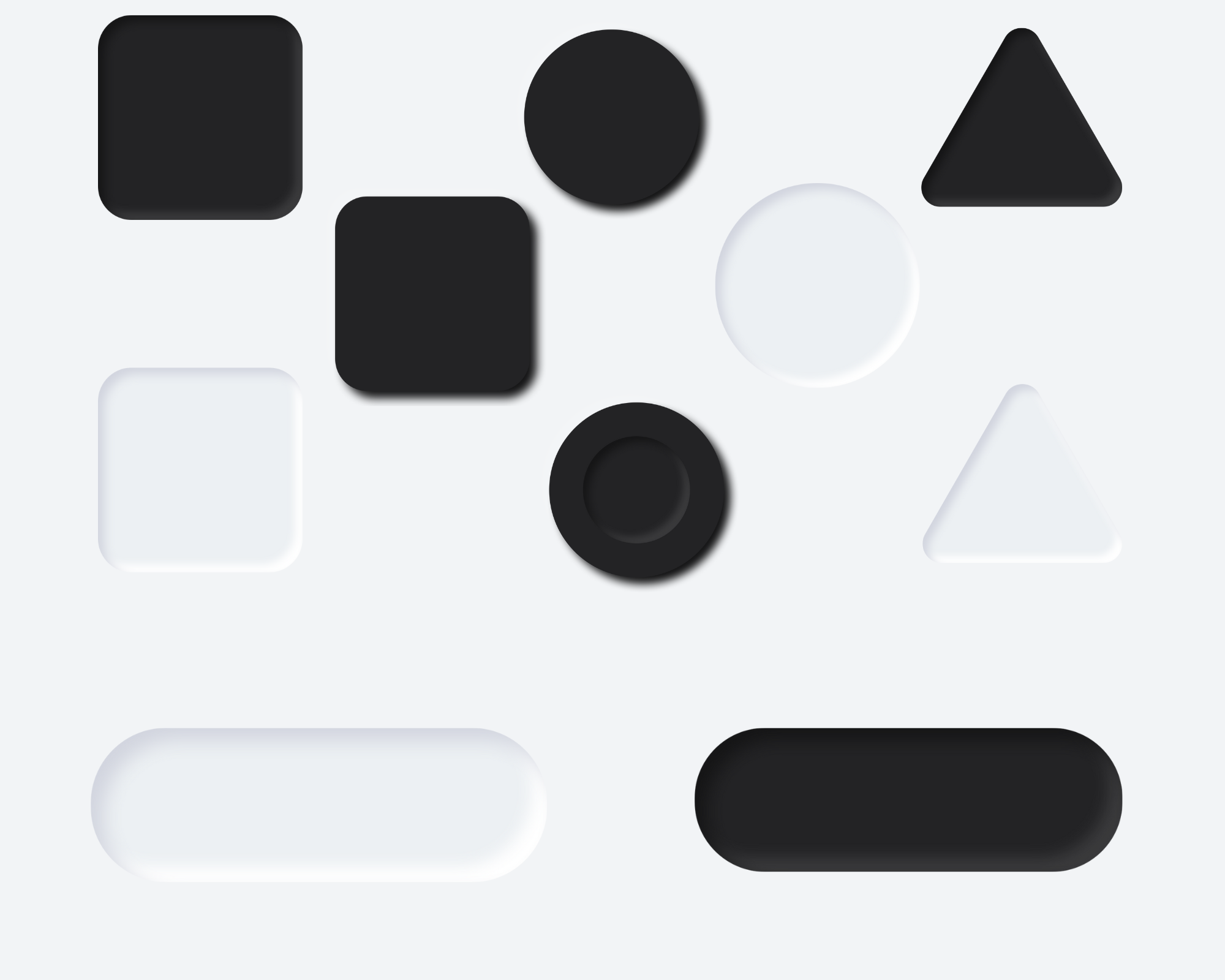The Art of Mobile App Design: Exploring the Latest Trends in UX/UI
By JoeVu, at: Oct. 10, 2022, 2:24 p.m.
Estimated Reading Time: __READING_TIME__ minutes


Recently, mobile app design plays an important role in shaping user experiences and driving engagement. As smartphones and tablets continue to dominate the way we interact with technology, creating intuitive and visually appealing mobile apps has become essential for businesses and developers alike.
This article will dive into the art of mobile app design, exploring the latest trends in UX (User Experience) and UI (User Interface) that can elevate your app's success. By understanding the principles and elements of effective mobile app design, you can create compelling experiences that captivate users and differentiate your app from the competition.
In the following sections, we will examine the key aspects of mobile app design, including user experience and user interface. We will also discuss the significance of staying up to date with the ever-evolving trends in design to ensure your app remains relevant and resonates with your target audience.
So, let's dig deeper into the world of mobile app design and uncover the strategies that will enable you to craft exceptional app experiences that leave a lasting impression on your users.
1. Understanding User Experience (UX)
A seamless and delightful user experience is at the core of successful mobile app design. User Experience (UX) encompasses the overall journey a user takes while interacting with your app, encompassing their emotions, perceptions, and satisfaction. By prioritizing UX design, you can create an app that not only looks appealing but also provides intuitive and meaningful interactions.
1. User Research: The foundation of a great user experience starts with understanding your target audience. Conduct thorough user research to gain insights into their needs, preferences, and behaviors. This knowledge will guide your design decisions and help you create an app that caters to their specific requirements.
2. Information Architecture: Effective information architecture involves organizing content and features in a logical and intuitive manner. Create a clear and well-structured app hierarchy to facilitate easy navigation and ensure users can find what they need without confusion or frustration.
3. Wireframing and Prototyping: Before diving into the visual design, create wireframes and prototypes to outline the app's layout and interactions. These low-fidelity representations allow you to iterate and refine the user experience without investing significant time and resources.
4. Usability Testing: Validate your design choices through usability testing. Observe how users interact with your app, identify pain points, and gather feedback to enhance the user experience. Iterative testing ensures that your app continually evolves to meet user expectations.
By focusing on user experience, you can create mobile apps that are intuitive, easy to navigate, and deliver value to your users. Now, let's explore the next vital aspect of mobile app design: User Interface (UI).
2. Exploring User Interface (UI) Design
User Interface (UI) design plays a crucial role in mobile app success by visually engaging users and facilitating seamless interactions. An appealing and intuitive UI enhances usability and creates a positive impression. Let's delve into the key elements and principles of effective UI design.
1. Visual Hierarchy: Establish a clear visual hierarchy by arranging elements in a way that guides users' attention and communicates importance. Utilize size, color, contrast, and typography to differentiate between various UI elements and prioritize essential information.
2. Consistency and Branding: Maintain consistency throughout your app by adhering to established design patterns, color schemes, and typography. Consistent branding elements build recognition and familiarity, establishing trust and reinforcing your brand identity.
3. Responsiveness: Ensure your app's UI adapts seamlessly to different devices and screen sizes. Responsive design guarantees optimal user experiences across smartphones, tablets, and other devices, allowing users to interact with your app comfortably.
4. Intuitive Navigation: Design intuitive navigation that enables users to move effortlessly through your app. Utilize recognizable icons, clear labels, and logical grouping to facilitate easy exploration and reduce friction in finding desired features or content.
5. Gestures and Interactions: Leverage mobile device gestures, such as swiping, tapping, and pinching, to create natural and intuitive interactions. Intuitive gestures enhance user engagement and make the app feel intuitive and enjoyable to use.
6. Visual Feedback: Provide immediate visual feedback to user actions to create a sense of responsiveness and acknowledge their interactions. Visual cues, animations, and transitions enhance the overall user experience by providing feedback and confirmation.
By implementing effective UI design principles, you can create mobile apps that are visually appealing, intuitive to use, and aligned with your brand identity. Now, let's move on to the next section: "IV. Incorporating the Latest Trends in Mobile App Design."
3. Latest Trends in Mobile App UX/UI Design
Mobile app design is a dynamic field that constantly evolves to meet the changing needs and preferences of users. Staying up-to-date with the latest trends can help you create innovative and engaging experiences. In this section, we will explore some of the current trends in mobile app UX/UI design.
1. Minimalistic Design: Minimalism continues to be a popular trend in mobile app design, focusing on simplicity, clean layouts, and ample whitespace. By removing unnecessary elements and clutter, minimalistic design creates a visually appealing and user-friendly interface.
2. Dark Mode: Dark mode has gained significant popularity as it provides a visually striking and immersive experience while reducing eye strain in low-light environments. Incorporating a dark mode option into your app allows users to customize their experience and enhances usability.
3. Microinteractions: Microinteractions are small, subtle animations and feedback that occur in response to user actions. They add a layer of delight and interactivity to the app, making interactions more engaging and memorable.
4. Neumorphism: Neumorphism is a design trend that combines skeuomorphic elements with minimalistic aesthetics. It creates a soft, three-dimensional appearance by blending shadows, highlights, and gradients, resulting in a visually pleasing and tactile user interface.

5. Voice User Interface (VUI): With the rise of voice assistants and smart speakers, integrating voice user interfaces into mobile apps has become increasingly important. VUI allows users to interact with the app using voice commands, providing a hands-free and convenient experience.
6. Custom Illustrations and Animations: Custom illustrations and animations add personality and uniqueness to your app. They can help tell a story, engage users, and create a memorable visual experience that sets your app apart from the competition.
7. Gesture-Based Navigation: Gesture-based navigation replaces traditional buttons and menus with swipe gestures, making navigation more intuitive and fluid. Users can navigate through the app by swiping, dragging, or pinching, enhancing the overall user experience.
By embracing these latest trends in mobile app UX/UI design, you can create apps that are visually stunning, intuitive to use, and aligned with the expectations of modern users. In the next section, we will explore the "V. Best Practices for Mobile App Design," where we will discuss essential guidelines to ensure your app's success.
4. Designing for Success: Best Practices and Tips
Designing a mobile app involves more than just following trends. It requires careful consideration of user needs, usability principles, and industry best practices. In this section, we will delve into some essential best practices and tips to help you create a successful mobile app design.
1. User-Centric Approach: Put the user at the center of your design process. Conduct user research, gather feedback, and create user personas to understand their goals, preferences, and pain points. Design with empathy to ensure your app addresses user needs effectively.
2. Intuitive Navigation: Keep your app's navigation simple and intuitive. Use clear and recognizable icons, labels, and gestures to guide users through different sections and functionalities. A well-structured navigation system enhances usability and improves the overall user experience.
3. Consistent Branding: Maintain consistency in your app's branding elements, such as colors, typography, and imagery. A consistent brand identity helps users recognize and connect with your app, fostering trust and familiarity.
4. Responsive Design: Design your app to be responsive across different devices and screen sizes. Ensure that the interface adapts seamlessly to various resolutions and orientations, providing a consistent experience regardless of the device used.
5. Readability and Accessibility: Prioritize readability by using legible fonts, appropriate font sizes, and sufficient contrast between text and background. Consider accessibility guidelines to make your app usable for people with disabilities, including those with visual impairments.
6. Performance Optimization: Optimize your app's performance to ensure fast loading times and smooth interactions. Minimize unnecessary animations, optimize image and asset sizes, and employ caching strategies to deliver a seamless user experience.
7. Testing and Iteration: Regularly test your app's design with real users to gather feedback and identify areas for improvement. Conduct usability testing, A/B testing, and gather qualitative insights to refine your design iteratively.
8. Error Handling and Feedback: Design clear and concise error messages to guide users when something goes wrong. Provide informative feedback for user actions to confirm their actions and keep them informed about the app's status.
9. Localization and Internationalization: Consider localization and internationalization from the early stages of design. Design interfaces that can accommodate different languages, cultures, and regions, allowing your app to cater to a global audience.
10. Continuous Learning: Stay updated with the latest design trends, emerging technologies, and user preferences. Embrace a growth mindset and continuously learn from user feedback, industry insights, and design communities to evolve your app's design over time.
By following these best practices and tips, you can create a mobile app design that not only looks visually appealing but also delivers an exceptional user experience. In the next section, we will explore "VI. Conclusion," where we will summarize the key points discussed in this article and highlight the importance of staying innovative in the ever-evolving field of mobile app design.
Some facts that you might notice:
1. Mobile app design is constantly evolving, with new trends and best practices emerging regularly.
2. UX/UI design is a crucial aspect of mobile app design, as it determines how users interact with the app.
3. Some of the latest trends in mobile app design include dark mode, minimalism, typography, gradients, rounded shapes, brutalism, neumorphism, VUIs, face ID, microinteractions, AR/VR, and multi-platform support.
4. Mobile app designers can use a variety of software tools, such as Sketch, Adobe XD, and Figma, to create their designs.
5. When starting with mobile app design, it's important to consider the target audience and the app's intended purpose.
6. Small and medium companies looking for IT outsourcing services can benefit from staying up-to-date with the latest trends in mobile app design to ensure their apps are user-friendly and competitive in the market.
5. Conclusion
In this article, we have delved into the art of mobile app design, exploring the latest trends in UX/UI. We began by understanding the importance of user experience (UX) and how it shapes the overall success of a mobile app. We then dived into user interface (UI) design principles, highlighting the key elements that contribute to an engaging and intuitive interface.
Moving forward, we explored the latest trends in mobile app UX/UI design, such as minimalist design, microinteractions, immersive experiences, and personalized interfaces. These trends provide insights into the ever-evolving landscape of mobile app design and offer inspiration for creating innovative and user-centric experiences.
Moreover, we discussed essential best practices and tips for designing mobile apps, including adopting a user-centric approach, ensuring intuitive navigation, maintaining consistent branding, prioritizing readability and accessibility, optimizing performance, and embracing testing and iteration. By following these guidelines, designers can create mobile app experiences that captivate users and drive success.
In conclusion, mobile app design is an intricate blend of art and science. It requires a deep understanding of user needs, an eye for aesthetics, and a commitment to delivering exceptional experiences. By staying updated with the latest trends, embracing user-centered design, and implementing best practices, you can create mobile apps that stand out in the competitive digital landscape.
Remember, the field of mobile app design is continually evolving, and it is crucial to stay curious, adapt to emerging technologies, and seek feedback from users. By staying innovative and continuously enhancing your design skills, you can shape the future of mobile app experiences and create memorable journeys for users around the world.
Thank you for joining us on this exploration of the art of mobile app design. We hope this article has provided valuable insights and inspiration to fuel your next design endeavor. Happy designing!





